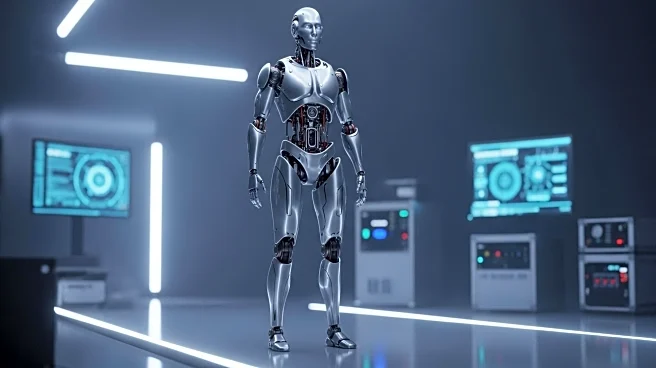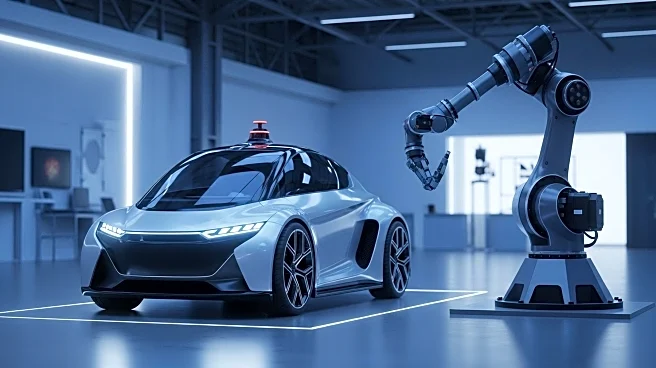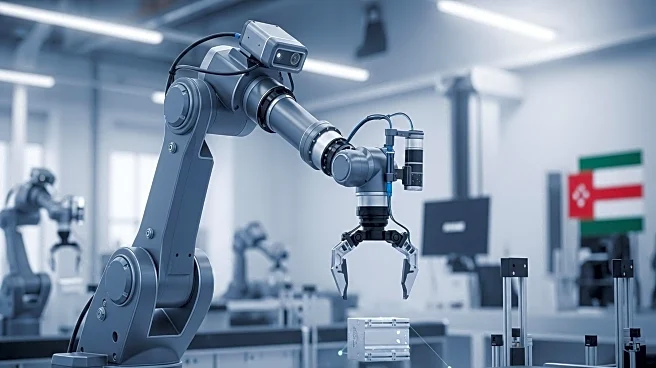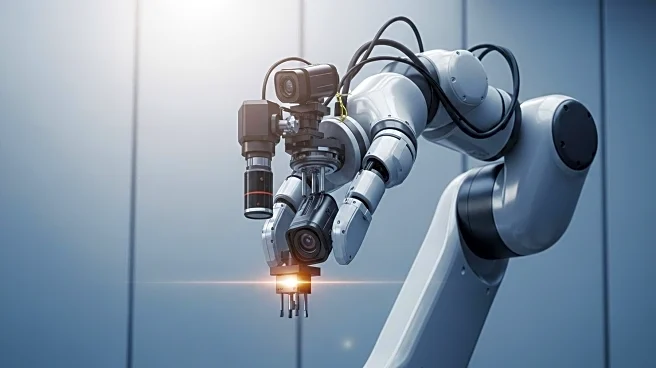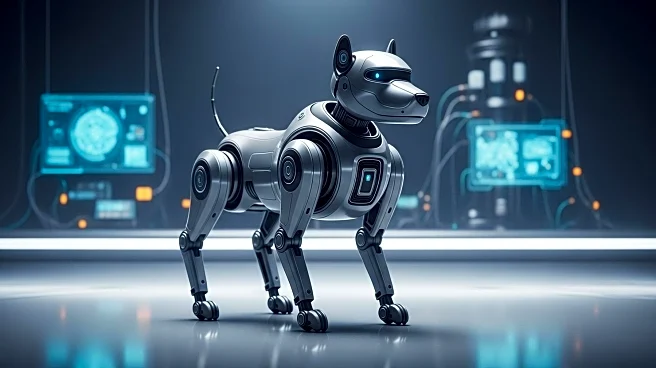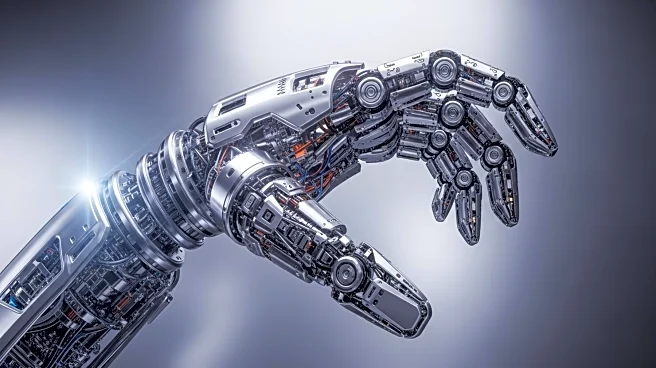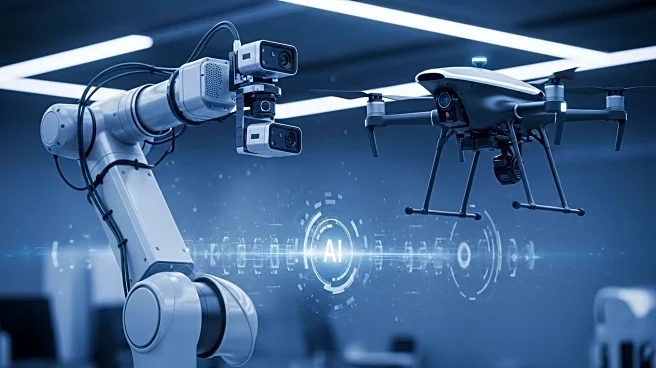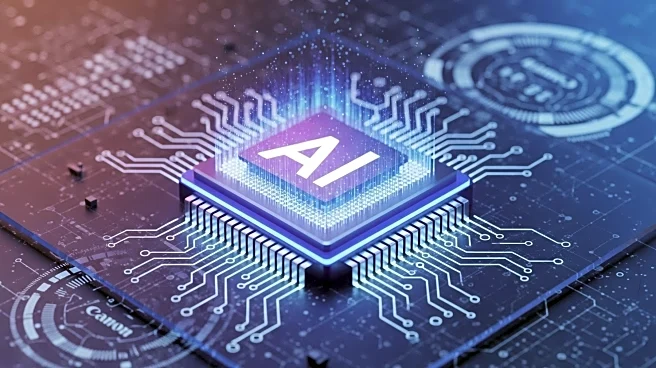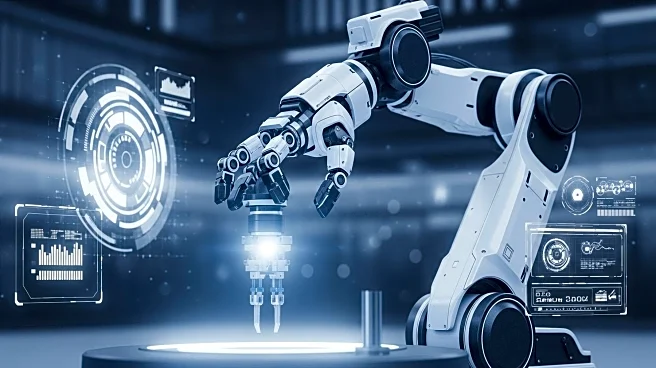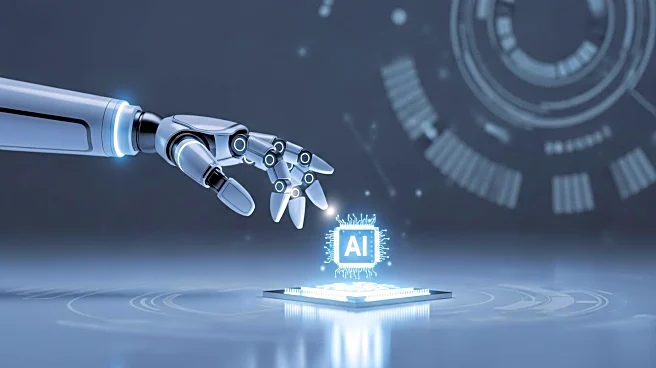What's Happening?
Bain & Company has released its Global Technology Report 2025, indicating that humanoid robots are still largely in the pilot phase despite significant investment and interest. The report notes that humanoid robots attracted approximately $2.5 billion in venture capital funding in 2024, driven by demographic pressures in advanced economies. While advances in generative AI and vision systems have brought intelligence and perception of humanoid robots closer to human levels, challenges remain in battery performance and fine motor skills. Currently, most humanoid robots operate for only about two hours per charge, with Bain estimating that a full eight-hour shift may be a decade away without breakthroughs in energy density. The report suggests that adoption will occur in waves, with humanoids likely appearing in logistics and industrial tasks within controlled settings over the next three years, and potentially expanding to semi-structured service roles within five years.
Why It's Important?
The development and deployment of humanoid robots have significant implications for various industries, including logistics, healthcare, and construction. As these robots become more capable, they could alleviate labor shortages and improve efficiency in sectors facing demographic pressures. However, the report emphasizes that ecosystem readiness, including regulatory clarity, safety certification, workforce acceptance, and public trust, will be crucial for scaling humanoid robots beyond pilot phases. Companies that begin experimenting early and prepare infrastructure will be better positioned to capitalize on the commercial value of humanoid robots as part of broader automation strategies.
What's Next?
The report anticipates that humanoid robots will gradually integrate into more complex environments, such as elder care and mining, as they develop physical intelligence—the ability to perceive, understand, and act in the real world. This progression will depend on technological advancements and the alignment of technology providers, component makers, integrators, and adopters on infrastructure, data, and safety standards.
Beyond the Headlines
The ethical and societal implications of humanoid robots are profound, as they could transform labor markets and redefine human-machine interactions. Ensuring that these technologies are developed responsibly and inclusively will be essential to avoid potential negative impacts on employment and social dynamics.

